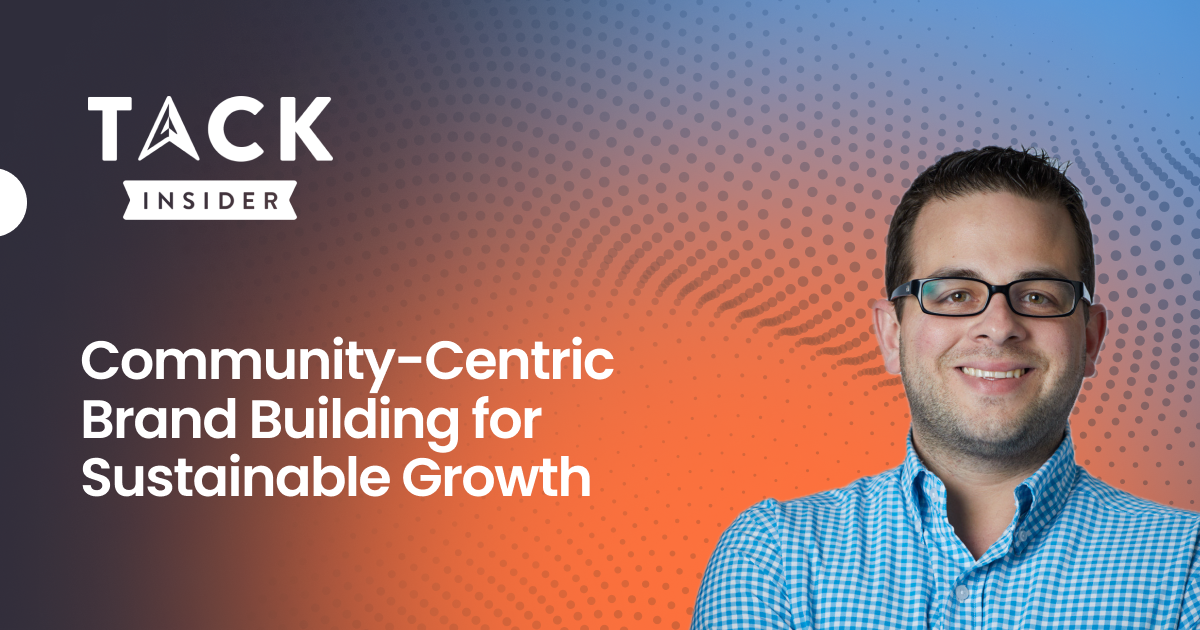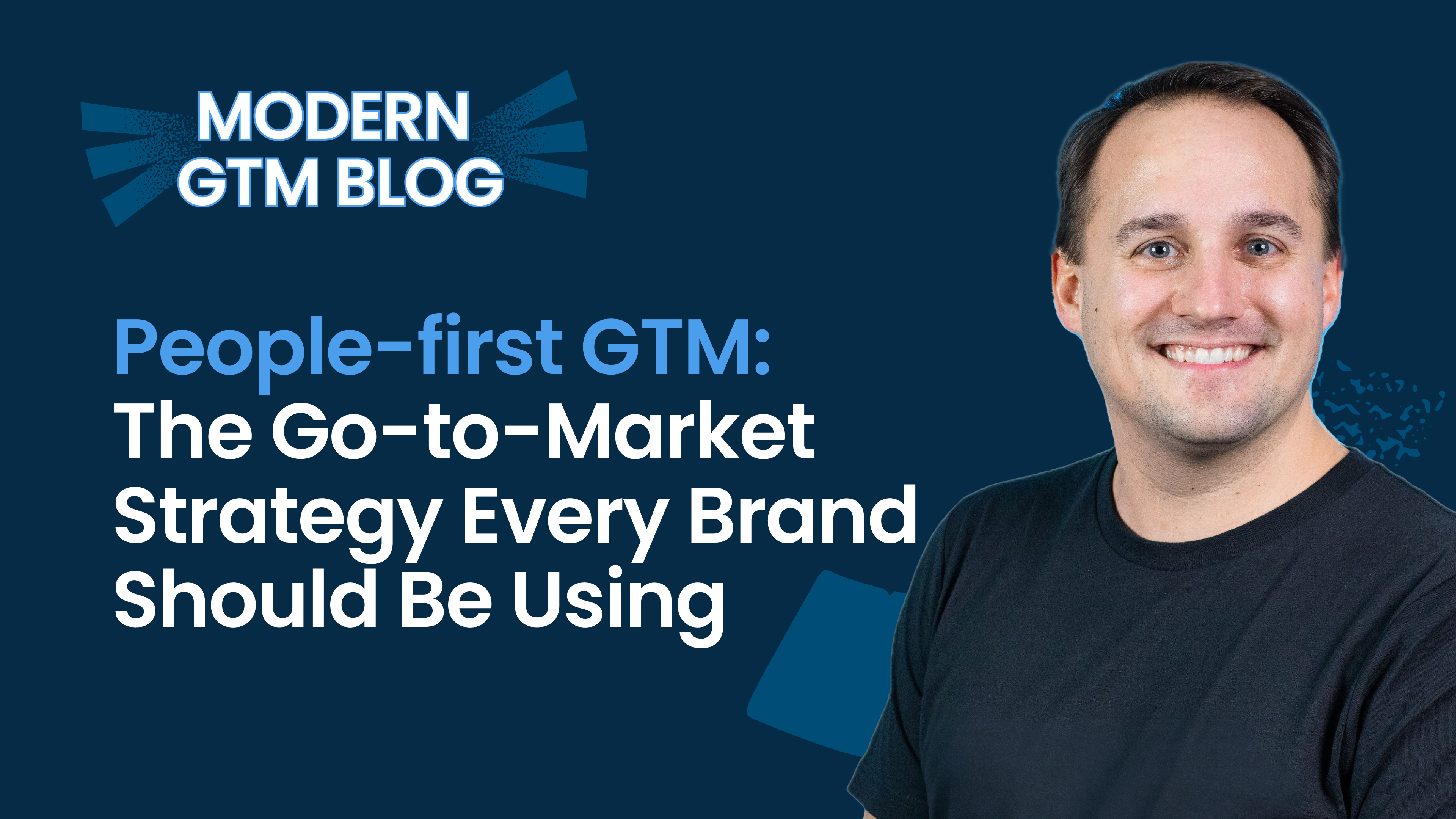What’s up, everyone? Hope those of you in the US enjoyed a nice long weekend. I certainly did (I am in Boston), and the weather was incredible.
How do you ensure your GTM strategy stands out in a world buzzing with constant digital noise? The answer lies in the power of community. But why are communities more than just a buzzword in modern GTM success?
Why is Community Vital?
Think of your community as your crew, your allies. They're not just customers but your advocates, your sounding board. Lose touch, and you lose their trust, loyalty, and invaluable insights.
-
What Happens Without Connection?: Without that community compass, you're sailing blind. You miss out on the pulse of your customers—their needs, their challenges. It's like trying to navigate choppy waters without a map.
-
Impact on Loyalty and Advocacy: Have you ever had a favorite brand that suddenly felt distant? That's what happens when the connection fizzles. Your loyal customers become adrift, seeking brands that make them feel valued and understood.
-
The Innovation Black Hole: Communities are hives of creativity and collaboration. Lose touch, and you'll miss out on brainstorming sessions and the lightbulb moments that drive innovation. It's like throwing away your compass and hoping for smooth sailing.
-
Brand Reputation at Risk: Neglecting your community is like ignoring your crew's concerns. Negative sentiment spreads like wildfire, tarnishing your brand's reputation faster than you can say, "Man overboard."
How does company culture affect Community and Connection?
Company culture provides the foundation for authentic relationships, employee advocacy, and collaborative efforts that are essential for effective community building.

-
Shared Values and Beliefs: A strong company culture is built on shared values and beliefs that guide how employees interact with each other and external stakeholders, including customers and community members. When these values align with those of the community, it creates a sense of authenticity and trust, fostering deeper connections and engagement.
-
Employee Advocacy: A positive company culture empowers employees to become advocates for the brand within their communities. When employees feel aligned with the company's values and mission, they are more likely to share their experiences and promote the brand organically, online and offline. This advocacy can amplify the reach and impact of community-building efforts.
-
Authenticity and Transparency: Authenticity is key to building trust within communities. A company culture prioritizing transparency, honesty, and integrity creates a strong foundation for authentic relationships with community members. By being genuine and transparent in their interactions, brands can foster deeper connections and loyalty within their communities.
-
Employee Engagement and Satisfaction: A positive company culture contributes to higher employee engagement, satisfaction, and retention levels. Engaged employees are more likely to actively participate in community-building efforts, whether it's through volunteering, attending events, or contributing to online discussions. Their enthusiasm and commitment can inspire others within the community to get involved and contribute to its growth.
-
Cultural Impact on Customer Experience: Company culture directly influences the customer experience, affecting community perception and engagement. A culture that prioritizes customer-centric values, such as empathy, responsiveness, and accountability, creates positive customer experiences, strengthening their connection to the brand and the community it fosters.
-
Innovation and Collaboration: A culture of innovation and collaboration encourages employees to think creatively and work together to solve problems. This mindset extends to community-building efforts, where teams can collaborate with community members to co-create solutions, address challenges, and drive positive change. By fostering a culture of innovation and collaboration, brands can strengthen their relationships with the community and drive sustainable growth.
Cultivating a Strong Company Culture to Support Community-Building Efforts:
To cultivate a strong company culture supporting community-building efforts, you must prioritize transparency, empathy, and inclusivity within your organization. Here's how:
-
Lead by Example: Start from the top down by embodying the values and behaviors you want to see reflected in your company culture. Leaders should actively engage with the community, listen to feedback, and demonstrate empathy and authenticity.
-
Define Core Values: Clearly define your company's core values and mission statement and ensure they align with your community-building objectives. Communicate these values regularly to employees and encourage them to embody these principles in their interactions with customers and each other.
-
Foster Open Communication: Create channels for open communication and collaboration within your organization. Encourage employees to share ideas, provide feedback, and participate in decision-making processes related to community-building initiatives.
-
Invest in Training and Development: Provide opportunities to empower employees to become effective community advocates and ambassadors. Equip them with the skills and knowledge they need to engage with customers authentically and build meaningful connections.
-
Celebrate Diversity and Inclusion: Foster a culture of diversity and inclusion that celebrates all community members' unique perspectives and experiences. Create spaces where everyone feels welcome, valued, and respected, regardless of background or identity.
Strategies for Nurturing Online Communities Effectively:
Nurturing online communities effectively requires a combination of active engagement, authentic communication, and value creation. Here are some strategies to consider:
-
Listen and Respond: Actively monitor online conversations and feedback channels to understand your community members' needs, concerns, and interests. Respond promptly to inquiries, address issues transparently, and acknowledge positive contributions.
-
Provide Value-Added Content: Create and share valuable content that educates, entertains, or inspires your community members. Offer resources, insights, and experiences that align with their interests and aspirations and encourage them to engage with and share this content with others.
-
Facilitate Meaningful Connections: Foster connections and relationships among community members by providing opportunities for networking, collaboration, and mutual support. Host virtual events, discussion forums, or interest-based groups where members can connect with like-minded individuals and share their experiences.
-
Empower Community Leaders: Identify and empower community leaders or advocates who can help facilitate conversations, answer questions, and foster engagement within your online community. Provide them with resources, support, and recognition for their contributions.
-
Measure and Iterate: Continuously monitor key metrics such as engagement levels, sentiment, and member satisfaction to gauge the effectiveness of your community-building efforts. Use this data to identify areas for improvement and refine your strategies over time.
Why do communities need a spark?
Communities need a spark to ignite interest, engagement, and momentum. Here's why:
-
Initial Engagement: A spark captures people's attention and motivates them to participate in the community. It catalyzes initial engagement.
-
Shared Purpose: The spark often embodies the community's shared purpose or values, attracting like-minded individuals who resonate with it.
-
Sustained Momentum: The spark fuels ongoing interest and momentum within the community, keeping members engaged over time.
Real-life Brand Examples of Successful Sparks:
-
Tesla: Tesla's mission to accelerate the world's transition to sustainable energy is a powerful spark for its community. The company's innovative electric vehicles and commitment to sustainability inspire passionate advocates eager to join the movement.
-
Red Bull: Red Bull's "Red Bull Stratos" project involved Austrian skydiver Felix Baumgartner's record-breaking freefall from the stratosphere, which was a remarkable spark for its community. The event generated widespread excitement and engagement, showcasing Red Bull's commitment to pushing the limits of human potential.
-
Patagonia: Patagonia's dedication to environmental activism and sustainable business practices is a compelling spark for its community. The company's initiatives, such as "1% for the Planet" and "Worn Wear," resonate deeply with environmentally-conscious consumers who are passionate about making a positive impact.
Best Strategies to Identify and Leverage a Spark for Your Brand:
-
Understand Your Audience: Research to understand your target audience's values, aspirations, and pain points. Identify themes or issues that resonate deeply with them.
-
Align with Brand Values: Identify a spark that aligns closely with your brand's values, mission, and unique selling proposition. Choose a spark that authentically reflects who you are as a brand.
-
Create Compelling Content: Develop compelling content or initiatives that embody the spark and capture people's attention. This could include thought-provoking campaigns, inspiring stories, or innovative projects.
-
Foster Community Engagement: Encourage community participation and interaction around the spark. Provide platforms for discussion, collaboration, and shared experiences.
-
Measure Impact: Continuously monitor and evaluate the spark's impact on community engagement, sentiment, and growth. Adjust your strategies as needed to maintain momentum and relevance.
Why is community connection a focus in People-First GTM's success?
#1 Communities Build Trustworthiness:
Communities foster trust because they're based on authentic interactions between real people. In fact, according to the Edelman Trust Barometer, 63% of people trust information from a person like themselves rather than from brands. By building genuine connections within communities, brands can tap into this trust.
-
According to Edelman's Trust Barometer, 63% of people trust information from a person like themselves, compared to only 42% who trust brands (source).
-
92% of consumers trust recommendations from friends and family over other forms of advertising, as per
Nielsen's research.
#2 Customer Loyalty and Retention:
Communities contribute to higher customer loyalty and retention rates. Think about it this way: acquiring a new customer costs five times more than retaining an existing one. Brands with strong community ties have better retention rates because they prioritize building relationships beyond mere transactions. For instance, Harley-Davidson's H.O.G. (Harley Owners Group) boasts a remarkable 65% retention rate among its members.
-
According to the Harvard Business Review, acquiring a new customer costs five to twenty-five times more than retaining an existing one.
-
Brands with strong community ties have 5% higher customer retention rates, as reported by
Bain & Company.
#3 Word-of-Mouth Marketing:
Communities serve as hubs for organic word-of-mouth marketing, which is incredibly influential. Research by Nielsen revealed that 92% of consumers trust recommendations from friends and family over other forms of advertising. When customers feel connected to a brand's community, they naturally become advocates, spreading positive word-of-mouth.
-
74% of consumers identify word-of-mouth as a key influencer in their purchasing decisions (source).
-
As Texas Tech University found, 83% of satisfied customers are willing to refer products and services, but only 29% actually do. This highlights the potential of engaged communities.
#4 Product Improvement and Innovation:
Communities provide invaluable feedback and insights that drive product improvement and innovation. By engaging with their community, brands deeply understand customer needs, pain points, and desires. Take LEGO Ideas, for example. This platform allows fans to submit and vote on new LEGO sets, resulting in successful products like the LEGO NASA Apollo Saturn V set inspired by a fan submission.
-
According to Harvard Business Review, 64% of consumers say their brand loyalty is driven by shared values.
#5 Market Differentiation: Community connection can be a powerful differentiator in a saturated market. Brands that prioritize community-building stand out by creating memorable experiences and emotional connections. Glossier, for instance, has cultivated a cult-like following by involving its community in product development and marketing decisions, fostering a sense of belonging and exclusivity.
-
65% of consumers feel a stronger connection to brands that share similar values (study).
- 80% of consumers are more likely to do business with a company if it offers personalized experiences
Final thoughts
Community connection is crucial for People-First GTM's success because it builds trust, fosters loyalty, drives advocacy, fuels innovation, and sets brands apart in competitive markets. By investing in authentic relationships with their audience, brands can achieve sustainable growth and long-term success.
Coming next week:
The Art of Selling Without Selling
Until then, be safe, and share this with a friend who would enjoy It. As always, reply to this and let me know what you think! I love talking to people.
Nick
PS: We have an amazing webinar coming up on June 5th with
Jenna Chambers
of
Terminus. If you want to learn more about activating your sales team for your ABM strategy, this one is a don’t miss!
Register here







